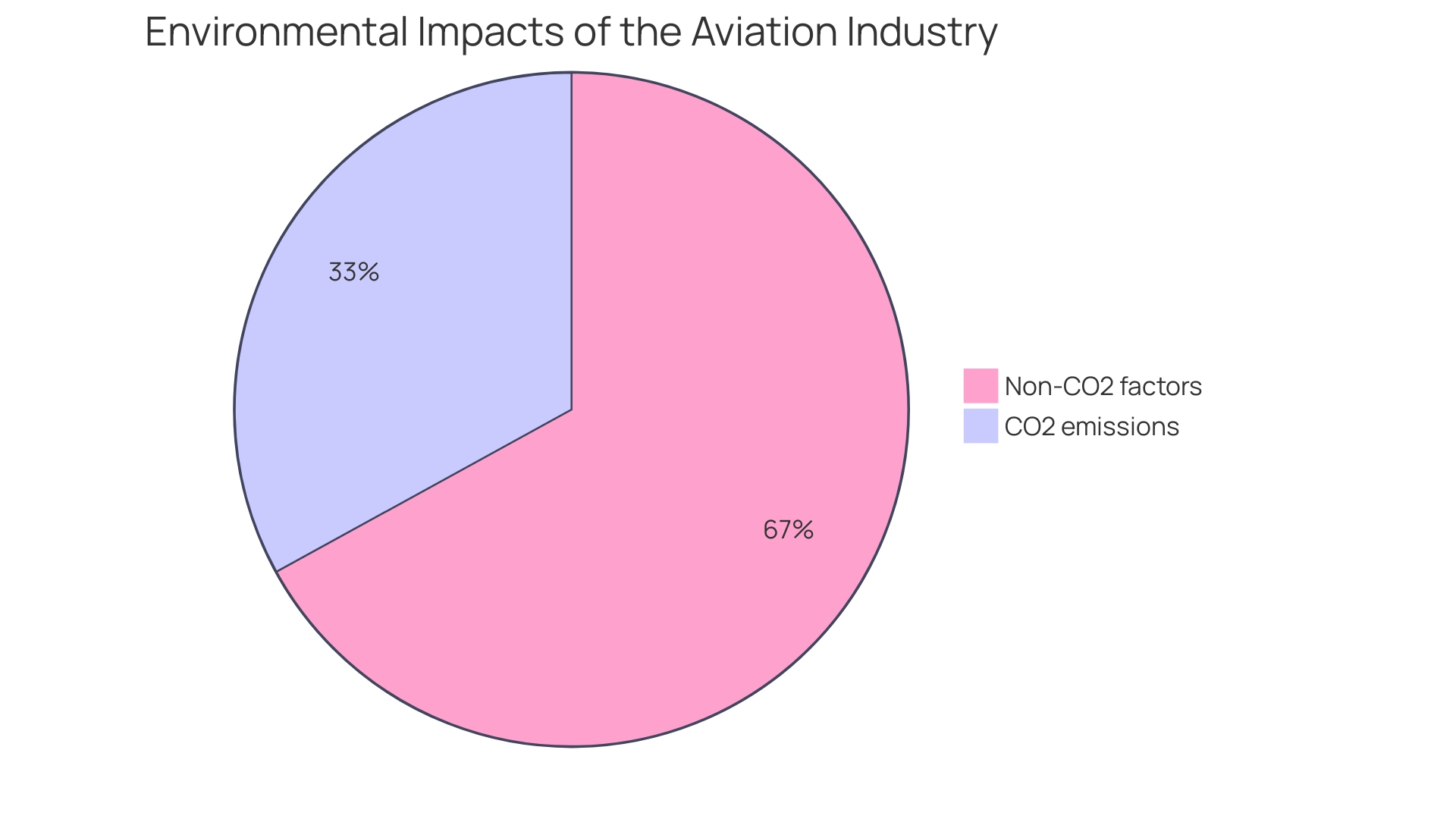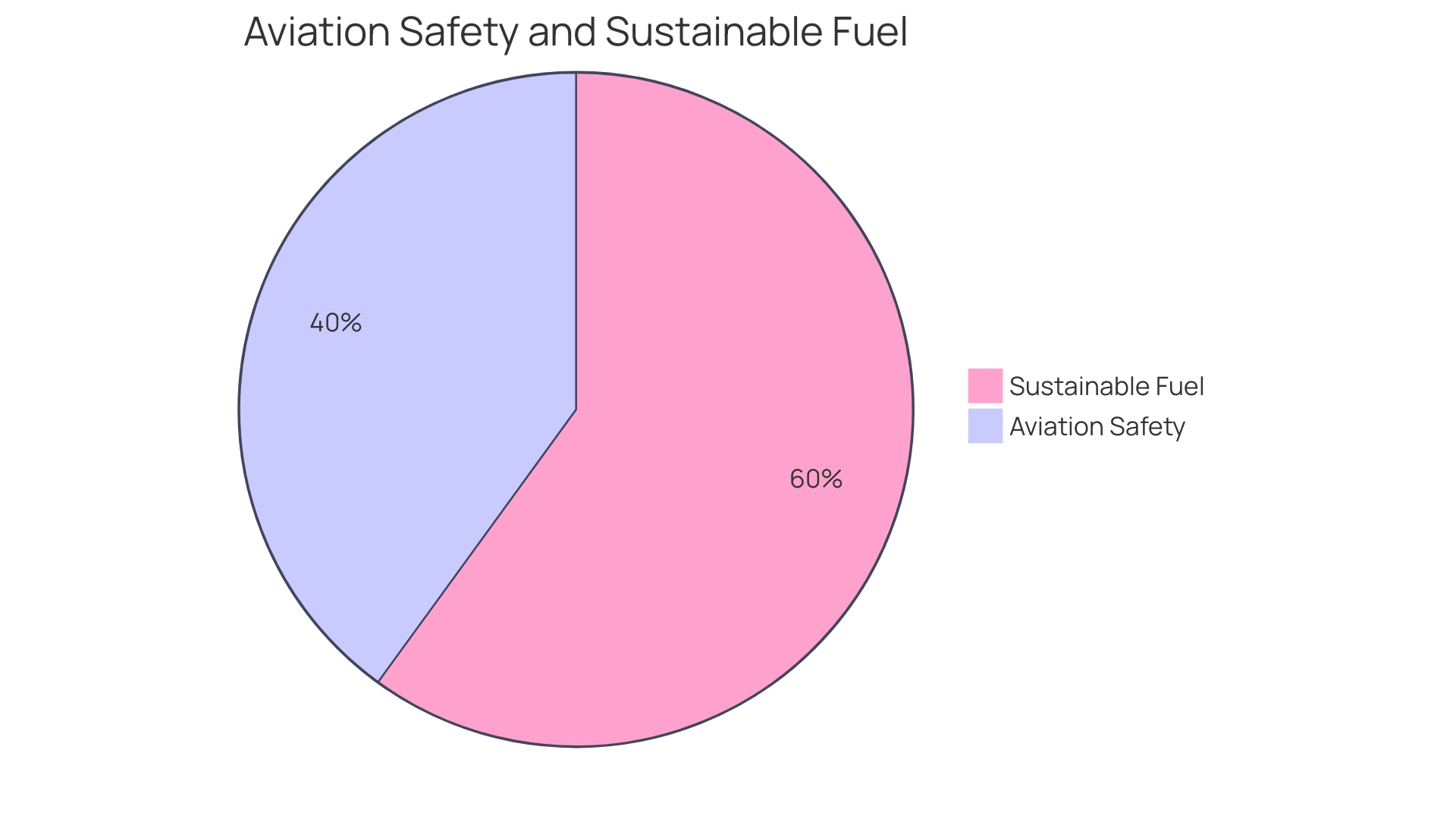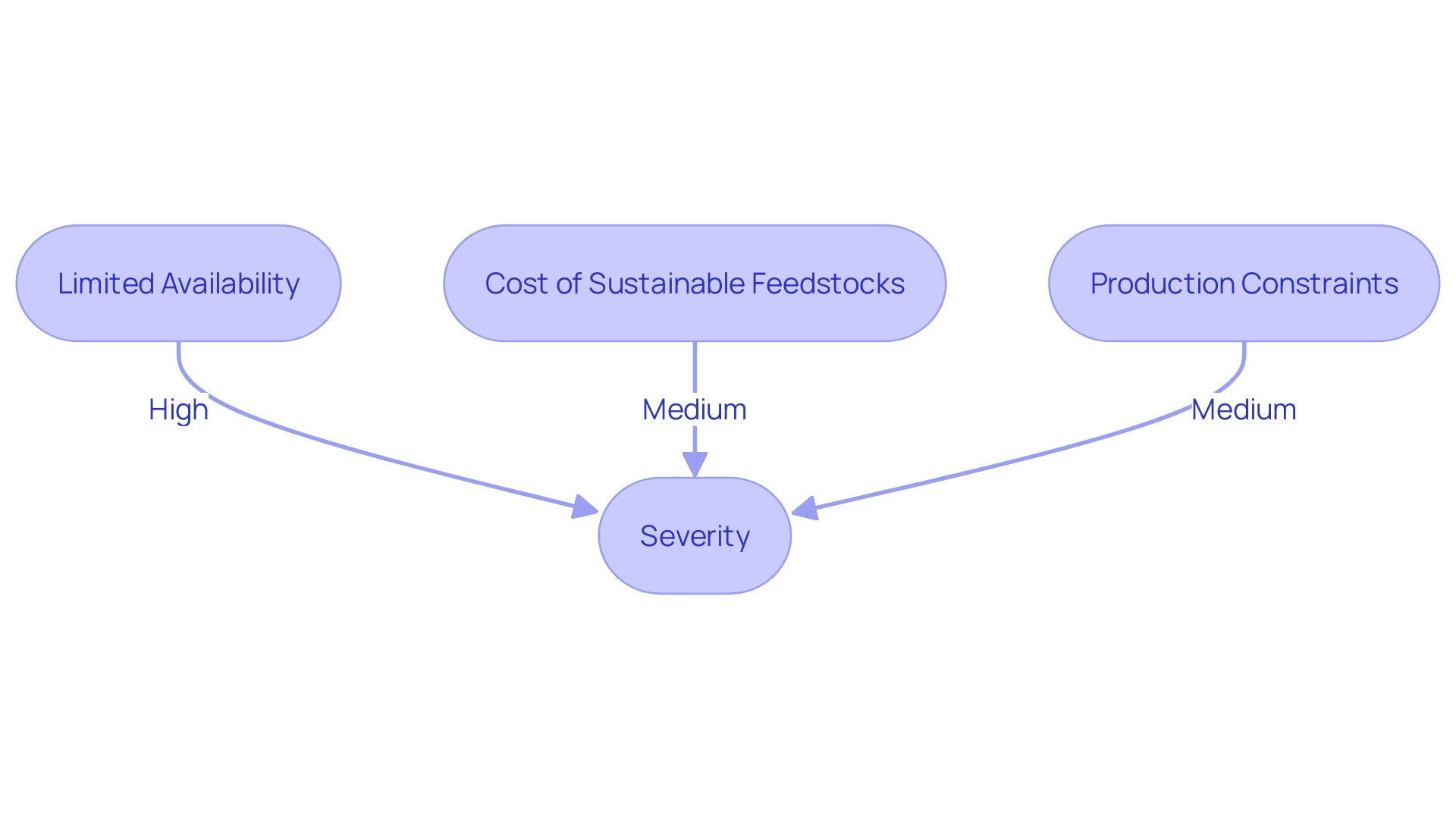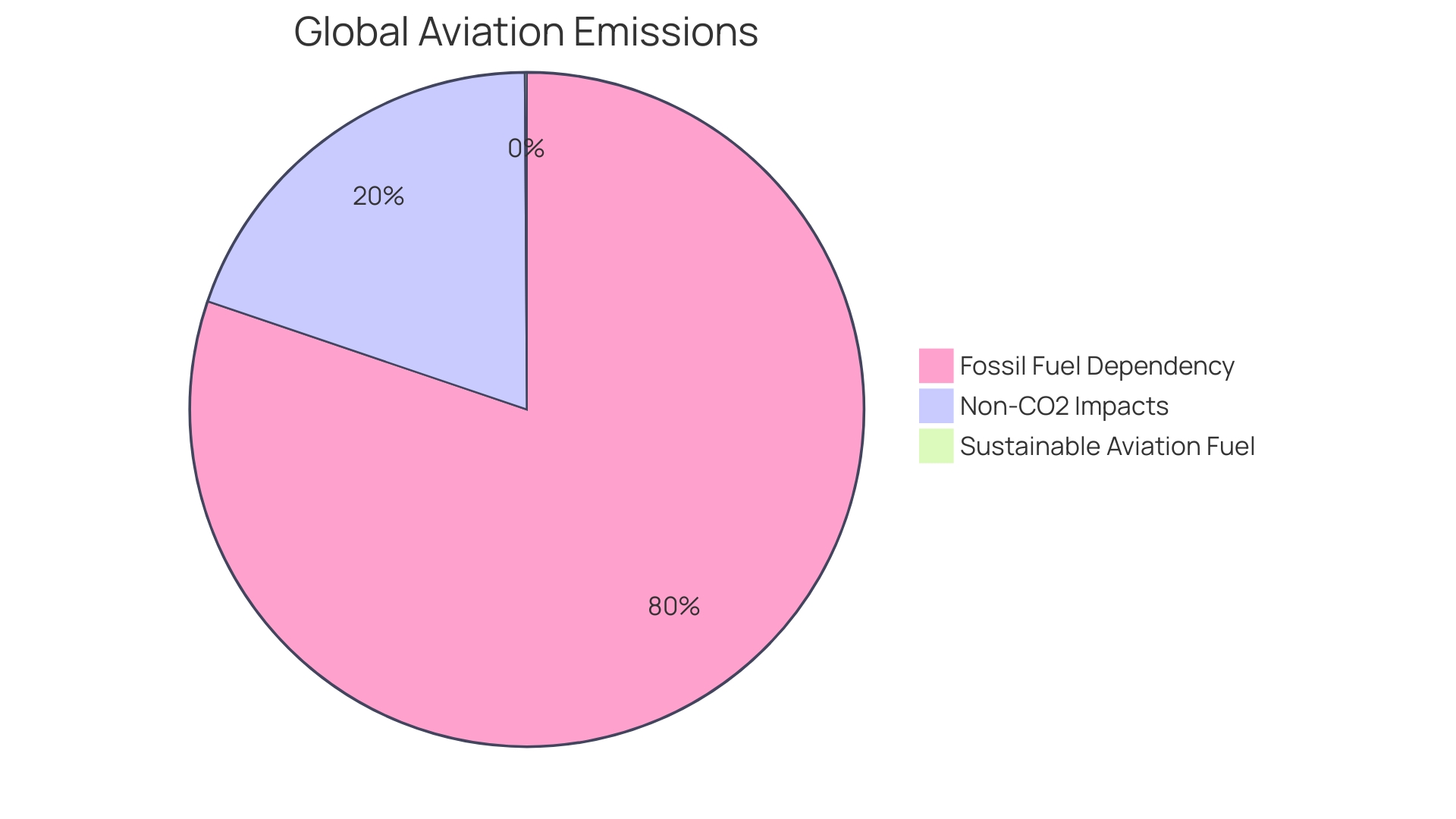Introduction
Sustainable Aviation Fuel (SAF) is a transformative solution in the quest to decarbonize the aviation industry. It is crafted from sustainable feedstocks such as biomass and waste oils, and its production process involves removing impurities to create a clean raw material. SAF can be used without modifying existing aircraft engines and infrastructure, making it a viable drop-in fuel option.
With the ability to significantly reduce greenhouse gas emissions, SAF offers a pathway towards a greener aviation industry. However, despite recent milestones like the first transatlantic flight powered entirely by alternative fuels, there are challenges to overcome, such as scaling up production and ensuring widespread availability. The journey towards a sustainable aviation future requires collaborative efforts from stakeholders in aviation, energy, and the public sector, as well as strategic policy and financial levers.
This article explores the benefits, feedstocks, compatibility, emissions reduction potential, challenges, regulatory frameworks, current usage, and future goals of SAF. It also highlights the importance of research, development, and innovation in scaling up production and meeting environmental targets. The adoption of SAF is crucial for the aviation industry's commitment to achieving net-zero carbon emissions and creating a healthier planet for future generations.
What is Sustainable Aviation Fuel (SAF)?
Sustainable Aviation Fuel (SAF) represents a significant advancement in the effort to decarbonize air travel. Crafted from a variety of sustainable feedstocks such as biomass and waste oils, SAF is engineered to be a drop-in fuel, meaning it can be used without modifying existing aircraft engines and infrastructure. The production process of SAF involves collecting and transporting feedstocks to a treatment center where impurities are removed, producing a clean raw material.
Hydrocarbons derived from these processes are then formulated into fuel that closely mirrors the chemical properties of traditional jet fuel, but with a key difference: SAF can reduce greenhouse gas emissions significantly, offering a pathway to a much-needed greener aviation industry.
A milestone was recently demonstrated with the first transatlantic flight powered entirely by alternative fuels, showcasing the potential of SAF in actual operation. This flight, operated by Virgin Atlantic from London to New York, marks a pioneering step towards achieving net-zero carbon emissions in the aviation sector. Despite the success, the aviation industry acknowledges the challenges that lie ahead, such as scaling up SAF production and ensuring its widespread availability.
With only 0.1% of flights currently powered by SAF, there is a pressing need to grow new crops and collect crop residues strategically to fuel the industry sustainably. The journey to a sustainable aviation future depends on collaborative efforts across the globe, integrating insights from stakeholders in aviation, energy, and the public sector, and emphasizing the importance of strategic policy and financial levers to facilitate the scaling of SAF.
Benefits of Sustainable Aviation Fuel
Sustainable Aviation Fuel (SAF) stands as a beacon of progress in the aviation industry's quest for environmental stewardship. With the capacity to significantly curb the sector's carbon footprint—a pivotal source of global greenhouse gas emissions—SAF emerges as a crucial tool in combating climate change. The aviation industry, exemplified by Virgin Atlantic's trailblazing efforts, is making headway with commendable milestones.
The airline's commitment to innovation, underscored by its expansion of transatlantic networks and introduction of routes to Austin and Tampa, parallels its environmental ambitions—demonstrating with Flight100 that long-haul flights can indeed operate on 100% SAF.
The integration of SAF into existing aviation frameworks is seamless; it necessitates no alterations to the aircraft or the infrastructure they operate within, which is a testament to its practicality. Despite SAF currently fueling only a minute fraction of flights, its adoption is poised to escalate, driven by the collaborative endeavors of industry giants like Airbus and Neste. This collaboration is not just about meeting sustainability targets but about forging a path towards a healthier planet.
The industry's dedication to safety and efficiency remains unwavering, even as it navigates the challenges of weather-induced delays. With the urgent need for renewable liquid fuels in aviation—a sector less amenable to decarbonization through electrification—the push for biorefineries and bioenergy crops is growing. National agencies in the US, including the Department of Energy, Transportation, and Agriculture, have rallied behind ambitious production targets for SAF.
By 2030, the goal is to achieve a production rate of 3 billion gallons per year, scaling up to 35 billion gallons by 2050—an initiative that promises to reshape the future of aviation and its environmental impact.
Feedstocks and Production Pathways for SAF
Sustainable Aviation Fuel (SAF) is crafted through multiple production pathways, utilizing diverse feedstocks such as waste oils, agricultural byproducts, and specialized energy crops. These resources undergo transformations via sophisticated conversion technologies, including Hydroprocessed Esters and Fatty Acids (HEFA) and Fischer-Tropsch synthesis. Each method presents distinct benefits and obstacles, hinging on the feedstock's availability, cost-effectiveness, and ecological impact.
Despite current utilization hovering around 0.1% of all flights, SAF is pivotal for the aviation sector's journey towards net-zero emissions. Clearly, the potential of SAF is recognized, yet the widespread adoption is impeded by the necessity for sizable volumes for long-haul flights, as well as the need for continued education on its sustainability merits. Industry partnerships are crucial in surmounting these challenges, as they foster innovation and scale-up production, making SAF a tangible solution for a greener planet.

Engine and Infrastructure Compatibility
Sustainable Aviation Fuel (SAF) stands at the forefront of transforming the aviation industry into a more eco-friendly sector. Virgin Atlantic, a pioneer in aviation innovation, has been integral in demonstrating Saf's potential. Their commitment was highlighted during a landmark flight, marking a significant stride towards achieving net-zero carbon emissions.
Saf's compatibility with current turbine engines is a testament to the fuel's feasibility as a substitute for conventional jet fuel. This compatibility is crucial, allowing for a smooth transition to SAF usage without requiring any alterations to aircraft engines or interrupting flight operations.
The seamless integration of SAF into the existing aviation infrastructure further accentuates its practicality. Storage, transportation, and distribution systems already in place for traditional jet fuel can be utilized for SAF without significant changes. This ensures that the shift towards a sustainable fuel source does not necessitate a complete overhaul of the current infrastructure, making the transition economically viable and operationally efficient.
Moreover, as global aviation networks continue to expand, with companies like Virgin Atlantic adding new routes and enhancing transatlantic connections, the adoption of SAF is imperative to sustain this growth while minimizing environmental impact. The joint efforts of industry leaders in promoting the use of SAF are indicative of a collective move towards a greener future for commercial aviation – a sector that has always prioritized safety and reliability. With ongoing investments in SAF production, the promise of a renewable, energy-dense fuel source becoming the norm is closer to reality, ensuring that the aviation industry can continue to thrive without compromising on its environmental responsibilities.

Emissions Reduction Potential of SAF
The aviation industry is making strides in reducing its environmental footprint by adopting Sustainable Aviation Fuel (SAF), which stands out as a transformative solution. SAF can lead to significant decreases in greenhouse gas emissions, including carbon dioxide (CO2), sulfur oxides (Sox), and particulate matter, when compared to conventional jet fuel. With a potential CO2 reduction, SAF is a cornerstone in the sector's ambition to meet emissions reduction targets.
Recent advancements, such as the milestone flight by Virgin Atlantic, underscore the industry's commitment to net-zero carbon emissions. Virgin Atlantic, a leader in innovation since its inception in 1984, has been recognized as Britain's only Global Five Star Airline by APEX and continues to expand its sustainable practices, including the use of SAF.
To enhance the value of SAF, strategic production and sourcing of biomass are essential. This involves understanding the benefits and trade-offs of various feedstocks, establishing processing facilities in strategic locations to minimize transport and infrastructure costs, and ensuring the feedstocks are processed to eliminate impurities. As commercial aviation is a significant contributor to anthropogenic atmospheric changes, accounting for about 3.5 percent, with CO2 emissions from aviation potentially occupying a quarter of the CO2 budget by 2050, the push for SAF becomes increasingly crucial.
Current usage levels show that only 0.1% of flights utilize SAF, highlighting the need for further adoption to enable aircraft to complete long-haul flights sustainably.
This push for sustainability is not without its challenges; however, it presents a clear path forward as outlined by research areas for policy development in aviation sustainability. With SAF, the industry can address concerns beyond CO2 emissions, including NOx and contrails, which have significant non-CO2 climate impacts, and work towards improving air quality and reducing noise pollution around airports. The entire aviation sector recognizes the urgency of this transition, as evidenced by the collaborative efforts to form comprehensive networks and joint ventures focused on sustainability, like the one between Air France-KLM, Delta Air Lines, and Virgin Atlantic.
Challenges and Limitations of SAF Adoption
Sustainable Aviation Fuel (SAF) is the aviation industry's key to achieving net-zero carbon emissions by 2050. Despite its potential, there are significant challenges in its implementation. Limited availability and the cost of sustainable feedstocks are primary roadblocks in scaling up SAF production.
Partnerships, as seen in the collaboration between Delta Air Lines and other stakeholders, are fundamental to driving the adoption of SAF. Delta's commitment to replace 10% of its annual 4 billion gallons of jet fuel with SAF by 2030 exemplifies proactive measures being taken within the industry.
Moreover, education plays a crucial role in debunking misconceptions surrounding SAF. As Amelia DeLuca, Delta's Chief Sustainability Officer, points out, it's essential for consumers to understand Saf's role in transitioning towards net zero, even if some amusingly associate it with the smell of French fries due to its raw materials like used cooking oil.
Regulatory frameworks and incentives are equally important to support SAF production and utilization. The inauguration of the LanzaJet Freedom Pines Fuels plant, the world's first ethanol-to-SAF facility, marks a historical step in aviation's decarbonization. However, the industry still faces the challenge of scaling SAF to meet the demands, as only a small fraction of flights currently use SAF due to production constraints.
As the US aviation sector is the third largest source of transportation emissions in the country, with expected growth in air travel, immediate and concerted efforts are necessary to expand Saf's reach and ensure its role in a sustainable future.

Regulatory Framework and Incentives for SAF
The advancement of Sustainable Aviation Fuel (SAF) is being propelled by a strengthening framework of supportive policies and incentives worldwide. In regions such as Europe, the US, and the Middle East, stakeholders from the aviation, energy, and public sectors are collaborating to scale the adoption of SAF, as outlined in a comprehensive report. This collaboration is underpinned by policy instruments that are instrumental in creating a fertile ground for SAF investment and market establishment.
In Europe, the ReFuelEU Aviation initiative, a key component of the ambitious 'Fit for 55' package, exemplifies such policy action. The package is designed to decrease the EU's net greenhouse gas emissions by at least 55% by 2030 in comparison to 1990 levels, setting a trajectory towards climate neutrality by 2050. A provisional political agreement was reached on this initiative, set to apply from the beginning of 2024, with full implementation of critical articles by 2025.
This regulatory momentum is a response to the environmental impact of the aviation industry, which accounts for approximately 3.5 percent of anthropogenic changes to the Earth's energy balance. The concern is heightened by projections that CO2 emissions from aviation could consume a quarter of the carbon budget allocated for limiting global warming to 1.5°C by mid-century.
Blending mandates, tax incentives, and research funding are among the measures being employed to encourage the shift towards SAF. These incentives are essential to combat the associated environmental challenges, such as the increase in CO2 emissions, NOx, ozone, noise pollution, and lead emissions from aviation activities, which have significant implications for air quality and public health.
The concerted action of the EU Member States and the Commission, along with support from ICAO, emphasizes the global leadership role in facilitating the transition to sustainable aviation. As the industry continues to focus on its safety culture and infrastructure, these regulatory frameworks and incentives are crucial in steering towards a greener future for aviation, ensuring that the industry aligns with the broader climate goals.

Current Usage and Future Goals for SAF
The aviation sector is on the cusp of a significant shift, with Sustainable Aviation Fuel (SAF) emerging as a pivotal element in the journey towards decarbonization. As of now, only a fraction of flights—0.1%—operate using SAF. However, this innovative fuel, derived from renewable resources like used cooking oil, offers a lower-carbon alternative to conventional jet fuel.
The industry's commitment to SAF is evidenced by the establishment of dedicated programs by airlines and airports, aiming to integrate SAF into a larger percentage of their fuel mix by specified dates.
Recent developments, such as the landmark ReFuelEU Aviation initiative, underscore the momentum behind SAF. This initiative is a key component of the 'Fit for 55' package, which sets ambitious targets for the European Union, including a 55% reduction in net greenhouse gas emissions by 2030 from 1990 levels. Regulations under ReFuelEU Aviation will be enforced from January 2024, with core articles coming into effect a year later, to ensure a level playing field in sustainable air transport.
Despite the clear environmental benefits and regulatory support, widespread adoption of SAF faces challenges, including the need for large volumes of biomass for production and the strategic placement of processing facilities. Collaboration between stakeholders in aviation, energy, and the public sector is crucial, as suggested by insights from Europe, the US, and the Middle East. These collaborations will help overcome current barriers and establish the financial and policy frameworks necessary to scale SAF production and use.
Educating consumers about SAF's role in sustainable travel is also vital. Misconceptions are rife, but as awareness grows, so does the understanding of Saf's potential to help the industry move toward net-zero emissions. As partnerships form and technologies advance, the impossible becomes possible, paving the way for a healthier planet for future generations.
Research, Development, and Innovation in SAF
Sustainable Aviation Fuel (SAF) represents a groundbreaking advancement in the aviation industry's quest for carbon neutrality. With a trifling 0.1% of flights currently powered by SAF, the push for innovation and development in this domain is more pressing than ever. The collaboration between research institutions, industry experts, and policy-makers is essential in scaling up SAF production to meet future demands and environmental targets.
Recent initiatives such as the Airbus and Emirates partnership have set the ambitious goal of rendering all aircraft 100% SAF-capable by 2030. This echoes the commitment by major airlines, including Virgin Atlantic, to achieve net zero carbon emissions. The aviation industry's expansion, with companies like Virgin Atlantic extending their network to new destinations in the US, underscores the urgency for sustainable fuel options.
The potential of SAF is not just a topic of interest for industry giants; it's also an educational tool, as demonstrated by the case study at Waubonsee Community College. Students explored the life-cycle impact of SAFs using Argonne National Laboratory's GREET model, gaining insights into the environmental implications of aviation fuels and the technologies that support their development.
British firms are pioneering unconventional feedstock pathways, transforming waste into valuable aviation fuel, and exploring power-to-liquid methods that offer nearly limitless fuel supplies, contingent on renewable energy and carbon capture advancements. Alongside these technological leaps, public and private investments are surging to prove SAF's reliability and compatibility with existing jet engines.
To catalyze the growth of the SAF market, stakeholders across Europe, the US, and the Middle East are being urged to pull financial and policy levers, as outlined in a comprehensive report that also identifies optimal production hubs globally. This strategic alliance among different sectors is pivotal in overcoming the current barriers to cost and supply that constrain the widespread adoption of SAF.
As the US aviation sector battles with its contribution to transportation emissions, with projections of increased air travel and freight transport demands, the shift towards SAF becomes not only advantageous but necessary. The long operational lifespan of commercial aircraft further complicates rapid decarbonization, presenting a unique challenge that SAF innovation aims to address.
In summary, the evolution of SAF is a multifaceted endeavor, necessitating collaborative efforts to revolutionize the aviation industry, enhance educational curricula, and meet the sustainability targets of the future.
Conclusion
Sustainable Aviation Fuel (SAF) is a transformative solution in the aviation industry's quest for decarbonization. Crafted from sustainable feedstocks, SAF offers a viable drop-in fuel option that significantly reduces greenhouse gas emissions. Its compatibility with existing engines and infrastructure makes it practical for a greener aviation industry.
Challenges remain in scaling up SAF production and ensuring widespread availability. Collaborative efforts from stakeholders in aviation, energy, and the public sector, along with strategic policy and financial levers, are crucial for a sustainable aviation future.
SAF offers benefits such as curbing CO2, SOx, and particulate matter emissions. Its seamless integration into existing frameworks supports its practicality. Partnerships between industry leaders drive its adoption and inclusion in fuel mixes.
SAF is crafted through various pathways using diverse feedstocks. Strategic production and sourcing of biomass are key to minimizing ecological impact and enhancing its value.
Regulatory frameworks and incentives support SAF production and utilization. Policies and collaborations worldwide create a conducive environment. Education is crucial in increasing awareness and debunking misconceptions.
Research, development, and innovation are essential in scaling up SAF production. Collaborations drive innovation and expand its reach. Financial and policy levers are necessary for market growth.
In conclusion, SAF offers a tangible path towards a greener aviation industry. Its compatibility, emissions reduction potential, and regulatory support make it practical and viable. Collaboration, education, and innovation are key to scaling up production and ensuring widespread adoption, paving the way for a sustainable future.




